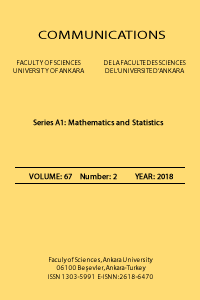Assessment of supplier risk for copper procurement
Procurement process, risk management, risk matrix total probability theorem, supplier risk, copper,
___
- AON, The Definitive Report on Risk--Aon's 2009 Global Risk Management Survey", insight.aon.com. 2009.
- Aqlan, F., Lam, S.S. A fuzzy-based integrated framework for supply chain risk assessment. International Journal of Production Economics, (2015) 31;161:54-63.
- Ayyub, M. B., Risk Analysis in Engineering and Economics. Chapman & Hall / CRC: New York. 2003.
- Buzdogan, E., Risk Analysis Of Procurement Activities For Copper Commodities And It's Economical Impacts. Unpublished Master Thesis. Albert Ludwigs University Of Freiburg. Germany, 2009.
- Chen, J., Sohal, A. S., & Prajogo, D. I., Supply chain operational risk mitigation: a collaborative approach. International Journal of Production Research, 51(7), (2013) 2186-2199.
- Farmer, D., Corporate planning and procurement in multinational firms. International Journal of Physical Distribution & Materials Management, 11(2/3), (1981), 36-45. doi: 10.1108/eb014489.
- Frame, J. D., Managing risk in organizations: A guide for managers. John Wiley & Sons, 2003.
- Foroughi, A., Albin, M., & Kocakulah, M., Perspectives on Global Supply Chain Supply-Side Risk Management. In Technology Management for the Global Future, 2006. PICMET 2006 (Vol. 6, pp. 2732-2740). IEEE, (2006, July).
- Holmes, A., Risk Management. John Wiley & Sons Ltd: Oxford, 2002.
- Hutchins, D., Just in time. Gower Publishing Ltd., Ltd, 1999.
- Macurova, P., & Juraskova, K., Analysis of risks generated by suppliers during the period of economic fluctuations. Amfiteatru Economic, 15(33), (2013), 27.
- Mangla S.K., Kumar P., Barua M.K. Risk analysis in green supply chain using fuzzy AHP approach: a case study. Resources, Conservation and Recycling, 104, (2015):, 75-90.
- Nagali, V., Hwang, J., Sanghera, D., Gaskins, M., Pridgen, M., Thurston, T.,& Shoemaker, G., Procurement risk management (PRM) at Hewlett-Packard company. Interfaces, 38(1), (2008), 51-60. doi: 10.1287/inte.1070.0333.
- Printz, S., von Cube, J.P., Ponsard, C., De Landtsheer, R., Ospina, G., Massonet, P., Schmitt, R. and Jeschke, S., A survey on risk-management and tooling support for procurement processes in supply chains. Simulation and Modeling Methodologies, Technologies and Applications (SIMULTECH), 6th International Conference on. IEEE. (2016).
- Russill, M. R., A Short Guide to Procurement Risk. Gower Publishing, Ltd., 2012.
- Tang, C. S., Perspectives in supply chain risk management. International Journal of Production Economics, 103(2), (2006), 451-488.
- Tang, O., & Musa, S. N., Identifying risk issues and research advancements in supply chain risk management. International Journal of Production Economics, 133(1), (2011), 25-34.
- Thun J.H., Hoenig D., An empirical analysis of supply chain risk management in the German automotive industry. International Journal of Production Economics. 131(1), (2011), 242-9.
- ISSN: 1303-5991
- Yayın Aralığı: Yılda 4 Sayı
- Başlangıç: 1948
- Yayıncı: Ankara Üniversitesi
Durhasan Turgut TOLLU, İbrahim YALÇINKAYA
On New Hermite-Hadamard-Fejér type inequalities for harmonically quasi convex functions
Abdullah DERTLI, Yasemin CENGELLENMIS
İbrahim ERDAL, Şeyhmus YARDIMCI
Ata Emre OZALP, İman ASKERZADE
A new representation of constant angle surfaces in H²×R with split quaternions
